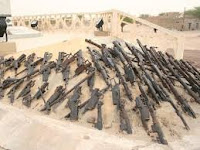Don’tnget Niger mixed up with Nigeria!
n
n
n
n
n
n
 |
| Camels in Niger |
n
nTheynare both nations in Africa, but Niger is a bit larger in size, muchnsmaller in population, poorer, and drier.
n
n
n
nNiger is landlocked,nwhereas Nigeria has coastal land and access to the Atlantic Ocean.
n
n
n
nNiger is 80% Sahara Desert, with the rest of its lands in constantndanger of drought, but Nigeria has varied biomes that include tropical rainforests, plains, and mangrove swamps.
n
n
n
n
n
nWhynare the two nations so similar in name? They are both named after thenNiger River, which runs through these and other African countries.
n
n
n
n
n
nInnNiger, the official language is French, and people are callednNigeriens.
n
n
n
n
n
nInnNigeria, the official language is English, and people are callednNigerians.
n
n
n
n
n
 |
| Apparently, the Nigeriens made a bonfire out of guns! |
n
nConcordnDay marks the anniversary of the 1995 signing of a peace agreementnbetween the Nigerien government and some rebel forces. When the finalnpeace agreement was signed and the Nigerien civil war was finallynover, people celebrated by burning weapons in a “Flame of Peace.”
n
n
n
n
n
n
nWhatnwill you be when you grow up?
n
n
n
n
n
nAlthoughnNiger has some resources, such as uranium, gold and perhaps oil, mostnof its people are either subsistence farmers (people who grow theirnown food but have almost no food left over to sell to others) ornnomadic livestock-raisers. I was shocked to read that close to 8% ofnthe population is enslaved people! Just like the enslavednpeoples of long ago, they are in forced-work situations, and they cannbe bought or sold. n
n
n
n
n
n
nNigernis not the only country that still struggles with slavery. Anhorrifying number of African countries have “hereditarynservitude”—which is another way of saying slavery. It’snhorrifying, isn’t it?
n
n
n
n
n
nDidnyou know about the Green Sahara?
n
n
n
n
n
nFornthe past 70 THOUSAND years (a long time!), the Sahara Desert hasnbeen…well, a giant desert, just about the way it is today. But aboutn12,000 years ago, a “wobble” in the Earth’s axis caused andifferent rainfall pattern. For thousands of years, seasonal monsoonsn(rainstorms) came to an area of the Sahara that was roughly the size ofnthe U.S.—and a moist, lush region was created.
n
n
n
n
n
n Wenknow about this period because we have found animal and human remainsnthat tell us about it. Herds of ostriches, giraffes, andnelephants, and perhaps even domesticated cattle, all lived alongside humans in thisnnot-desert Sahara, which scientists have dubbed “Green Sahara.”
Wenknow about this period because we have found animal and human remainsnthat tell us about it. Herds of ostriches, giraffes, andnelephants, and perhaps even domesticated cattle, all lived alongside humans in thisnnot-desert Sahara, which scientists have dubbed “Green Sahara.”
 Wenknow about this period because we have found animal and human remainsnthat tell us about it. Herds of ostriches, giraffes, andnelephants, and perhaps even domesticated cattle, all lived alongside humans in thisnnot-desert Sahara, which scientists have dubbed “Green Sahara.”
Wenknow about this period because we have found animal and human remainsnthat tell us about it. Herds of ostriches, giraffes, andnelephants, and perhaps even domesticated cattle, all lived alongside humans in thisnnot-desert Sahara, which scientists have dubbed “Green Sahara.”n
n
n
nRead about a discovery of scores of human skeletons here. n
n
n
n
n
n
n
n
nAlsonon this date:
n
n
n
n
nAnniversary of the launch of the Hubble Space Telescope
nn
n
n
n
n
n
n
n
n
n
n
n
n
n
n
n
n
n
n
n
n
n
n
n
n
n
n
n
n
n
n
n
n
nAnniversarynof the opening of the Woolworth Building n
nn
n
n
n
n
n
n
n


























